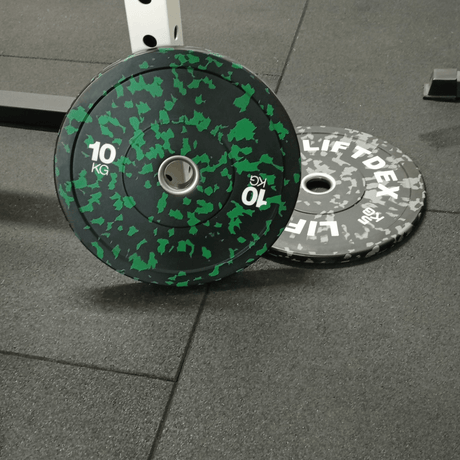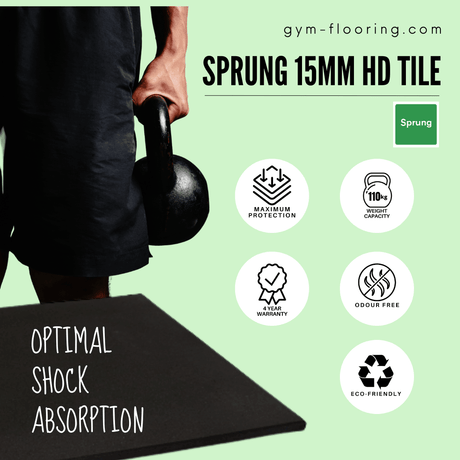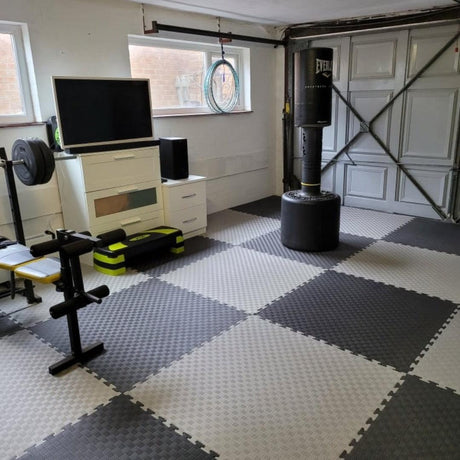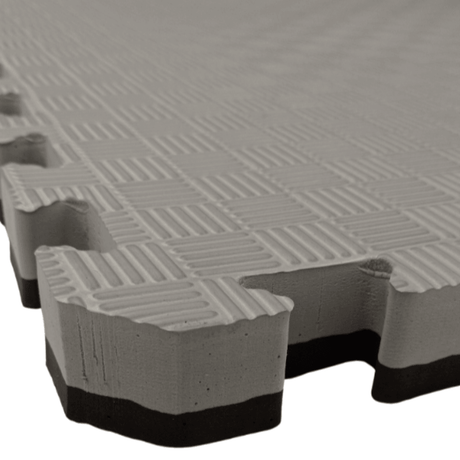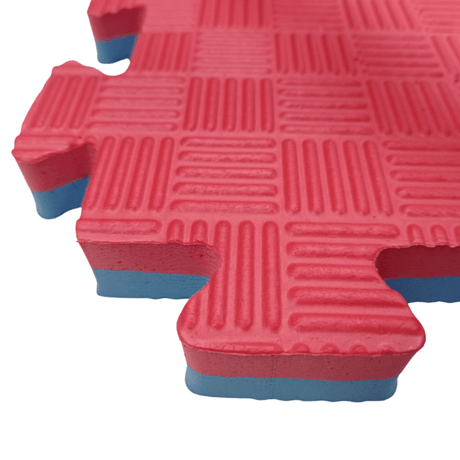Whether you’re setting up a home gym for personal use or a commercial gym to attract clients, creating a fitness space can quickly become expensive. But don’t let that scare you! With a bit of creativity and planning, you can build a high-quality gym without breaking the bank.
Here's how you can strike the perfect balance between cost-saving hacks and smart investments.
Table of Contents
Key Elements Every Gym Needs

Before diving into ways to save, let’s outline the basics every gym requires:
-
Space: Whether it’s a garage for your home gym or a studio for your commercial venture, space is your starting point.
-
Equipment: Think free weights, rigs and machines.
-
Storage: Racks and shelves to keep your space organised.
-
Flooring: Essential for safety, comfort, and protecting your subfloors, rubber matting is key for any gym space.
-
Lighting and Heating: Comfort is key for any exercise space. The space should be a good temperature with running heating, power for fans in warmer months and clear and bright lighting.
Where to Save Money
Now that we have the basics down, what ways can you reduce costs to keep things budget-friendly when creating a home or commercial gym? Here's a few tips:
1. Buy Second-Hand Equipment
Fitness equipment, especially larger items like treadmills and power racks, can cost a fortune. Second-hand gear from online marketplaces, charity shops, or gym liquidations can save you hundreds of pounds. Many used pieces are in excellent condition but cost a fraction of the price.
2. DIY Storage Solutions
Custom gym storage can be expensive, but you can easily create your own. Repurpose old bookshelves or build simple racks using wood and pipe fittings. Pegboards are also great for hanging smaller items like resistance bands or jump ropes.
3. Skip Non-Essential Machines
For a home gym, you probably don’t need a rowing machine, leg press, and elliptical trainer. Stick to versatile equipment like an adjustable bench, dumbbells, kettlebells, and a pull-up bar. For commercial gyms, consider leasing equipment instead of buying outright to reduce upfront costs.
4. Opt for Multi-Use Spaces
For smaller spaces, use foldable or storable equipment. For example, wall mounted squat racks that fold flat when not in use can free up space for other activities.
5. Flooring Alternatives
Proper flooring is essential for absorbing shock and protecting your space. Instead of new gym flooring, look for heavy-duty rubber mats used for horse stable mats or industrial workspaces. They’re just as durable and cost a little less.
Where to Spend a Little More

When establishing an exercise space, there are some things worth investing a little more in:
- High-Quality Weights and Barbells: These are items you’ll use daily, and cheap versions might not last or could even be dangerous. Look for trusted brands that are known for durability.
- Flooring for Weights Areas: While you can save on flooring in some areas, investing in proper mats for lifting zones is essential. This reduces the risk of injury and keeps your floors intact. Ensure you opt for high quality rubber mat flooring for proper impact absorption.
- Ventilation and Lighting: A gym should feel inviting. Poor ventilation can make workouts uncomfortable, while bad lighting makes the space unappealing. Invest in proper insulation and/or air conditioning and bright, energy-efficient lighting.
- Commercial Gym Branding: If you’re setting up a business, invest in things like logos, signage, and a good website to attract customers. Marketing your gym business is essential at the initial stages of your gym and will set the tone for your brand.
Customer Feedback:
"High quality rubber. Very happy with my gym tiles which look amazing in my new studio. My order arrived quickly as promised and the product is solid and great quality. Would definitely recommend this company."
What Gym Equipment Should I Buy?
We know the fundamentals needed for a well functioning gym, but what equipment pieces should a well balanced gym space have? This really comes down to the location of your gym, the space and budget you have and your main fitness or gym user's goals.
Home Gym Equipment Suggestions
Here's our list of essential gym equipment for a home gym. Remember, you don't need to buy all of these items straight away. Also, if you have a very small space, you may not have the capacity to invest in specific items. That doesn't matter. Just focus on what's important to you and the space and resources available to you.

Commercial Gym Equipment Recommendations
Here are some recommendations if you're outfitting a commercial gym. Again, you may not require all of these items in your gym and you might want to start off with just some of the equipment that aligns with your personal objectives and build it up.

Creative Cost-Saving Tips
Financing a new gym project can be a challenge. Try some of these creative ways of getting more bang for your buck:
- Start Small: There’s no need to buy everything at once. Focus on the essentials and build your gym over time. You might realise you don’t need some of the items you initially thought were must-haves.
- Host a Swap Event: If you’re part of a fitness community, organise a gear swap. This allows people to trade equipment they don’t use for something they need.
- DIY Gym Décor: For commercial gyms, aesthetic touches don’t have to cost a fortune. Use wall stencils, paint murals yourself, or add motivational quotes using inexpensive vinyl stickers. For home gyms, mirrors from charity shops can make the space look professional.
- Use Apps Instead of Fancy Tech: Skip the high-tech screens and gadgets for tracking workouts. Apps like MyFitnessPal, Strong, or Google Fit can provide everything you need at no cost or a small subscription fee.
Home Gym vs Commercial Gym: Specific Considerations

There are a few different factors to consider when setting up a home gym compared to designing a new commercial gym space. Here are some of the important things to keep in mind for these two different projects:
For Home Gyms:
- Maximise Small Spaces: Use your spare room, garden shed or even create a garage gym that's not being used. Turn 'dead' space into a functional area by clearing out clutter and being clever with storage.
- Prioritise Compact Equipment: Look for multi-purpose gym equipment to maximise your workouts and opt for adjustable items which save space such as dumbbells, wall mounted racks, compact, foldable machines and good space-saving storage.
For Commercial Gyms:
- Offer Classes Over Equipment: Group classes such as HIIT and Tabata require minimal gear and attract more clients. Offer good quality exercise content over extensive equipment if investing in equipment in the offset is over your budget.
- Lease to Reduce Upfront Costs: Leasing machines or collaborating with fitness equipment suppliers can spread expenses over time. This allows you to introduce varied and good quality equipment without a large financial outlay.
Final Thoughts
Building a gym on a budget is absolutely achievable with a bit of resourcefulness. Prioritise what’s most important for your goals, whether that’s versatility in a home gym or aesthetic appeal for a commercial one. Invest wisely in the items that matter, and don’t be afraid to think outside the box when it comes to saving. Your perfect gym doesn’t have to cost a fortune—it just needs a little creativity.
For essential gym flooring solutions, browse our popular range of home gym flooring uk and commercial fitness mats for quality products at competitive costs.





